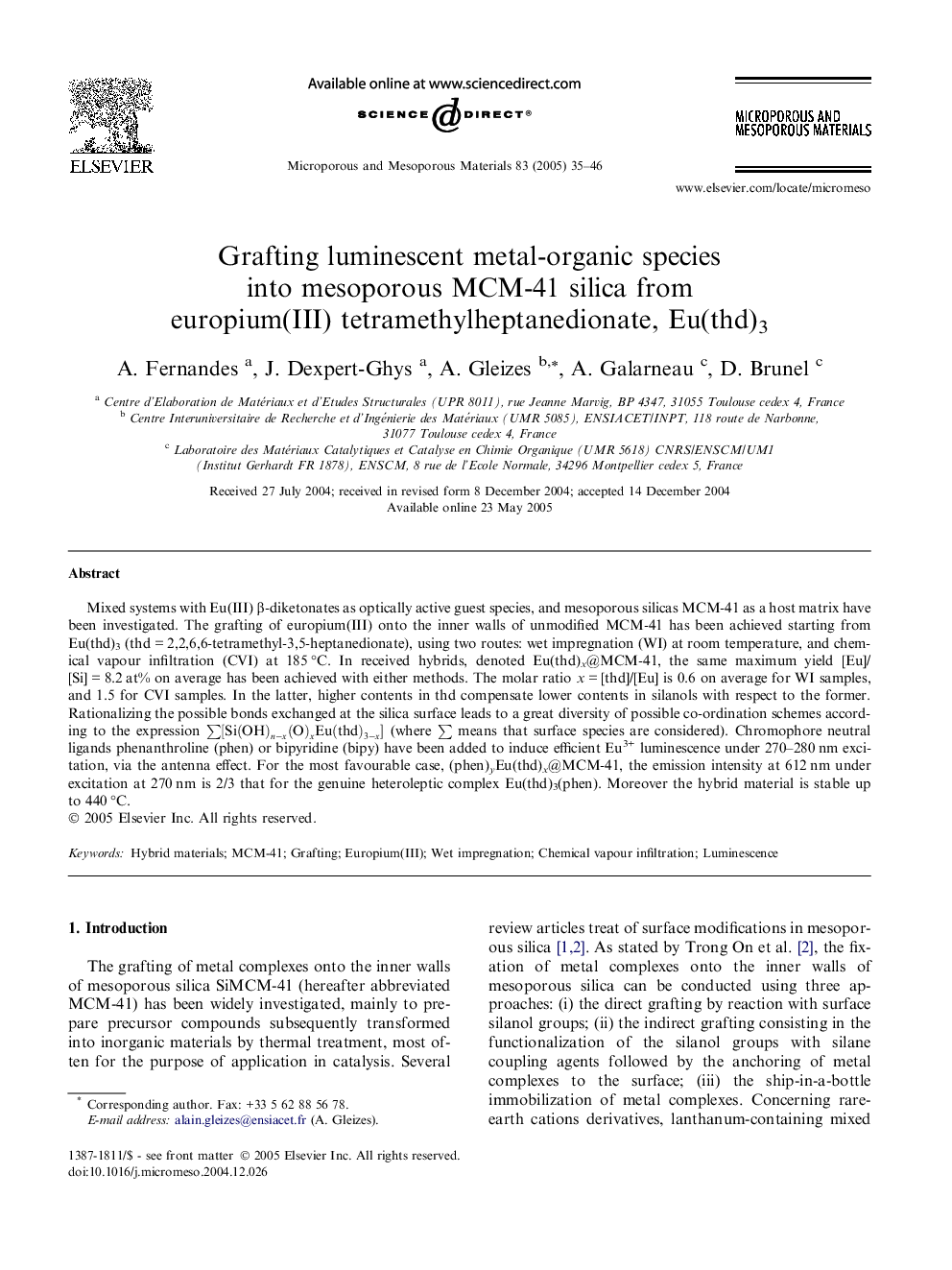| کد مقاله | کد نشریه | سال انتشار | مقاله انگلیسی | نسخه تمام متن |
|---|---|---|---|---|
| 9617632 | 49176 | 2005 | 12 صفحه PDF | دانلود رایگان |
عنوان انگلیسی مقاله ISI
Grafting luminescent metal-organic species into mesoporous MCM-41 silica from europium(III) tetramethylheptanedionate, Eu(thd)3
دانلود مقاله + سفارش ترجمه
دانلود مقاله ISI انگلیسی
رایگان برای ایرانیان
کلمات کلیدی
موضوعات مرتبط
مهندسی و علوم پایه
مهندسی شیمی
کاتالیزور
پیش نمایش صفحه اول مقاله

چکیده انگلیسی
Mixed systems with Eu(III) β-diketonates as optically active guest species, and mesoporous silicas MCM-41 as a host matrix have been investigated. The grafting of europium(III) onto the inner walls of unmodified MCM-41 has been achieved starting from Eu(thd)3 (thd = 2,2,6,6-tetramethyl-3,5-heptanedionate), using two routes: wet impregnation (WI) at room temperature, and chemical vapour infiltration (CVI) at 185 °C. In received hybrids, denoted Eu(thd)x@MCM-41, the same maximum yield [Eu]/[Si] = 8.2 at% on average has been achieved with either methods. The molar ratio x = [thd]/[Eu] is 0.6 on average for WI samples, and 1.5 for CVI samples. In the latter, higher contents in thd compensate lower contents in silanols with respect to the former. Rationalizing the possible bonds exchanged at the silica surface leads to a great diversity of possible co-ordination schemes according to the expression â[Si(OH)n-x(O)xEu(thd)3-x] (where â means that surface species are considered). Chromophore neutral ligands phenanthroline (phen) or bipyridine (bipy) have been added to induce efficient Eu3+ luminescence under 270-280 nm excitation, via the antenna effect. For the most favourable case, (phen)yEu(thd)x@MCM-41, the emission intensity at 612 nm under excitation at 270 nm is 2/3 that for the genuine heteroleptic complex Eu(thd)3(phen). Moreover the hybrid material is stable up to 440 °C.
ناشر
Database: Elsevier - ScienceDirect (ساینس دایرکت)
Journal: Microporous and Mesoporous Materials - Volume 83, Issues 1â3, 1 September 2005, Pages 35-46
Journal: Microporous and Mesoporous Materials - Volume 83, Issues 1â3, 1 September 2005, Pages 35-46
نویسندگان
A. Fernandes, J. Dexpert-Ghys, A. Gleizes, A. Galarneau, D. Brunel,